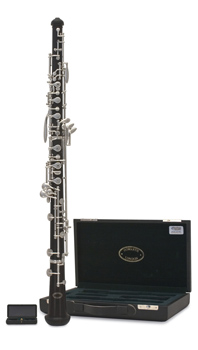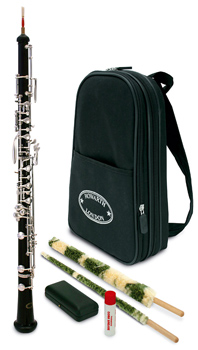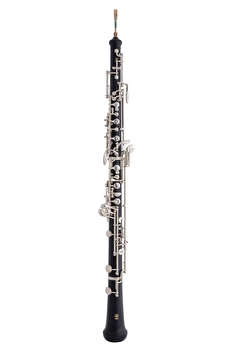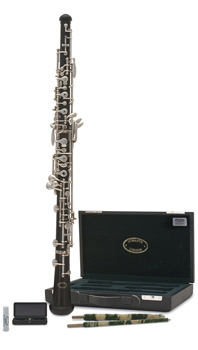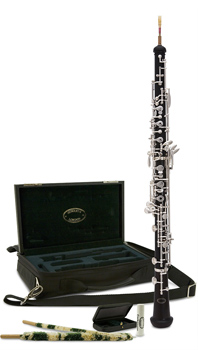- Sale (1)
- Howarth (5)
- Yamaha (3)
- Buffet (2)
Oboes
The oboe is a double reed woodwind instrument with an extremely distinct and unique sound. It is often found in orchestras and although the oboe is very similar in appearance to a clarinet, the double reed function actually makes the two instruments very different.
The oboe has three pieces to it, these are; the top joint, the lower joint and the bell. There isn't a 'mouthpiece' in the conventional sense, as the reeds for the oboe stick out on their own (unlike a clarinet, whose reeds needs a mouthpiece to attach to). The oboe has a very narrow bore (the tube where the air flows through) and it has a range of two and a half octaves (low Bb to an A or higher). The oboe is played by blowing into the reed, and the notes of the instrument are changed by pressing the keys on the instrument. There can be upto 45 pieces in the oboe key system, so the instrument is relatively complex to master.
Is the oboe hard to play?The oboe is widely considered one of the hardest and challenging instruments in the modern orchestra - and this is usually put down to the double reed system used to play the oboe. Most beginners of the oboe will often spend a lot of initial lessons just learning how to produce noise from the mouthpiece. It can take lots of time to master the technique needed to produce a constant and steady sound. Learning to then control the sound, and add texture, tone and emotion to the music is another challenge altogether.
The history of the oboe?The oboe has a long and rich history of players and uses. Historians think that the oboe dates back as far as ancient Greece, however the instrument will have changed in form since that time. It is believed that the oboe made its 'official' orchestral debut in France in 1657 - which means that the oboe has over 500 years of orchestral playing. Today, you'll find modern oboists playing not only in orchestras, but in concert bands, film music, folk music, and even jazz and pop. The instrument is flexible to genre and that is what makes it so popular and fun to play.
Do you need help buying an oboe?If you're looking to purchase an oboe, whether that be as a beginner or an expert, we know that investing in an instrument is a big commitment. We want to help you find the ideal oboe for you, and our musical experts at Dawkes will be on hand to help answer any questions, queries or concerns. We're always happy to help where possible, and guide you through the wide selection of oboes we have available at Dawkes, so you can choose the ideal brand and model for you.
